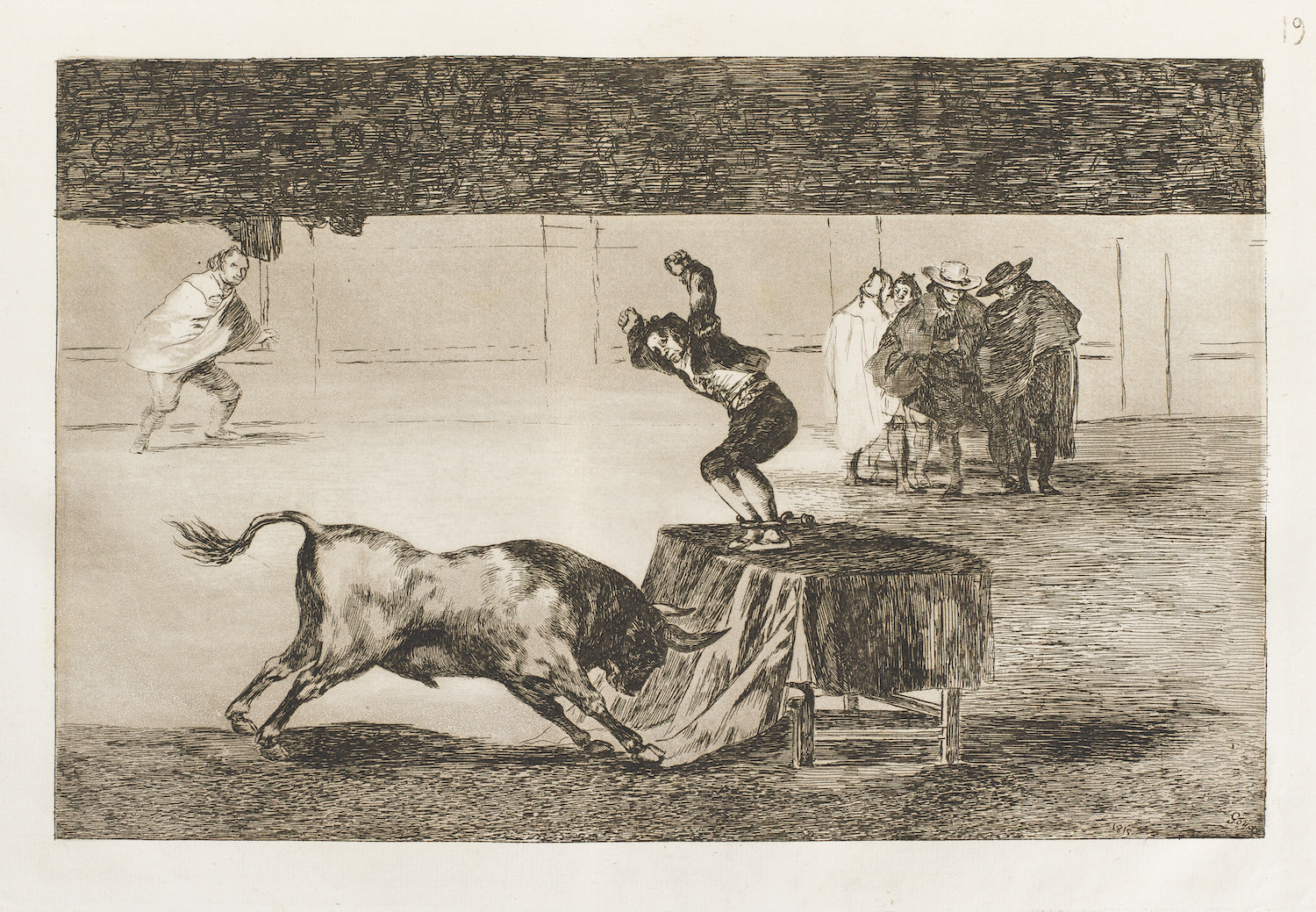
A rare, complete set of Francisco de Goya’s bullfighting etchings, titled La Tauromaquia, has been discovered by chance at the Château de Montigny, in Eure-et-Loir, Northern France.
On April 4, Sotheby’s London will auction the album of 33 etchings, which has an estimate of between £300,000-500,000 ($366,000-610,000) as part of its Prints & Multiples sale.
The estimate might be cautious, however, since, according to the artnet Price Database, a complete set of Goya’s La Tauromaquia sold at Christie’s New York in April 2013 for $1.9 million, smashing the record for prints by the artist.
“With La Tauromaquia currently holding the auction record for a series of prints by Goya, we’re expecting an enthusiastic response from collectors,” Séverine Nackers, head of prints at Sotheby’s Europe, said in a statement.
Francisco Goya, etching from La Tauromaquia series (1815-16). Courtesy Sotheby’s London.
The volume was discovered as the new heirs to the castle were inspecting the property. Tucked away at the back of a library shelf, they found a 19th-century ledger containing 90 lithographs bearing the signature H. Bellangé, followed by another series of prints, which were rapidly identified as etchings by Goya.
The monochrome etchings—found in perfect condition—were created by the Spanish master in 1815-1816, by using dark umber ink on textured, handmade paper.
According to Sotheby’s, they are particularly valuable because they are examples of the first and only contemporary edition that was printed for Goya.
The etchings’ provenance is also particularly colorful. In around 1831, they traveled from the court of Madrid—where Goya had been court painter to King Charles IV—to the Château de Montigny, where they languished for 150 years, until their recent discovery.
“To find a complete set of Goya’s bullfighting prints with such historically significant provenance is a once-in-a-lifetime discovery,” Nackers added.